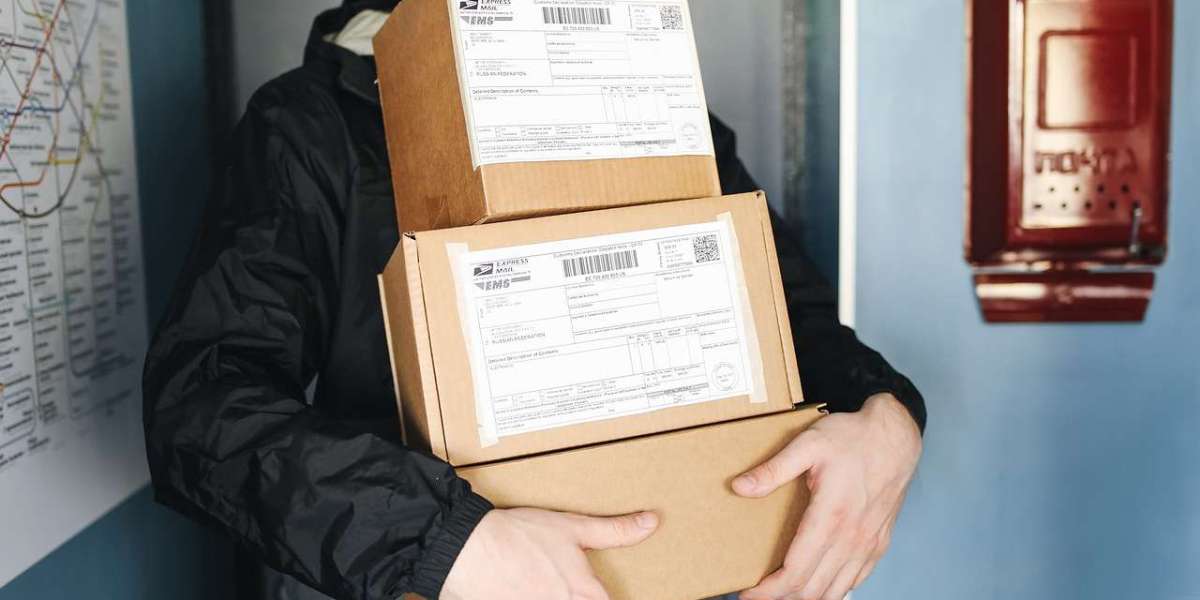Sending large parcels can seem like a daunting task, whether you're shipping a bulky gift, business inventory, or an oversized product. But with the right planning, information, and services, you can send large packages without the stress. In this blog, we'll walk you through everything you need to know to ensure that your large parcel reaches its destination safely, on time, and at the best price.
What is Considered a "Large Parcel"?
Before diving into the details, it’s important to understand what constitutes a large parcel. Typically, a large parcel is any package that exceeds the standard size and weight limits set by most courier companies. These limits vary, but a rough guide is:
- Weight: A large parcel is usually anything over 2-3 kg (4-7 lbs), but some carriers define large parcels as those over 10 kg (22 lbs).
- Dimensions: Standard parcel services tend to accept items up to 1.5 meters in length and around 3 meters in combined length and girth (length + width + height). Anything exceeding these measurements is generally considered large.
For example, furniture, large electronics, home appliances, and bulkier products often fall into the category of large parcels.
Why is Sending Large Parcels Different?
Shipping large parcels presents unique challenges compared to smaller packages. Here are some of the key factors that make large parcel shipping different:
- Higher Shipping Costs: Large parcels are generally more expensive to ship due to their size and weight. Shipping carriers often charge based on both the weight and volume (dimensional weight), so even if your parcel isn’t particularly heavy but is bulky, the cost can be high.
- Special Handling Requirements: Due to their size, large parcels may require special handling, including extra protection, care, and sometimes a dedicated vehicle for transportation.
- Limited Carrier Options: Not all carriers accept large parcels, and those that do may have restrictions or require special arrangements. For instance, a local courier service might not be equipped to handle items over a certain size.
- Longer Delivery Times: Larger items may take longer to process, transit, and deliver due to their size and the additional logistics involved.
With all these factors in mind, let's dive into the essential steps for successfully sending large parcels.
1. Choose the Right Carrier
The first step in sending a large parcel is selecting a reliable carrier. Not all carriers have the infrastructure to manage large packages, so it’s essential to choose one that is capable of handling the size and weight of your parcel. Here are some common options:
National Courier Services
- Royal Mail (UK): Offers a "Parcels" service for larger packages. However, items exceeding 2m in length may require special arrangements.
- USPS (United States): The USPS offers "Parcel Select" and "Priority Mail" for larger items, but size restrictions apply.
- FedEx: Provides an array of services for large parcels, including Ground, Express, and Freight shipping.
- UPS: Offers services for parcels weighing up to 150 lbs (68 kg), with options like UPS Ground and UPS Freight.
Freight Shipping Services
For truly oversized or extremely heavy parcels (i.e., items weighing 70 kg/150 lbs or more), you may need to use a freight carrier. These services are designed specifically for large, bulky shipments. Some major freight companies include:
- DHL Freight
- XPO Logistics
- YRC Freight
Freight services often require specialized handling, so if your item is particularly large, this might be the best option.
Courier Consolidators
For international shipments or long-distance domestic shipments, consolidators (companies that bundle multiple parcels together for cost-effective shipping) might be a good option. They typically offer bulk shipping rates, and can help you navigate the complexities of international regulations.
Online Shipping Platforms
You can also use third-party platforms like ShipBob, ShipStation, or Easyship that integrate with major carriers to help find the best rates and service options for sending large parcels.
2. Proper Packaging is Essential
Packaging large parcels correctly is crucial for ensuring the item arrives undamaged and in good condition. Here's how to package a large parcel securely:
- Use Sturdy Boxes or Crates: Ensure your box is strong enough to support the weight of the item. If your item is fragile or valuable, consider using a wooden crate for added protection.
- Padding and Cushioning: Use foam, bubble wrap, or packing peanuts to cushion the item. Even with large items, the goal is to prevent any movement inside the box that could lead to damage.
- Reinforce the Box: For heavy or large parcels, reinforce the box with extra packing tape, especially along the seams and edges.
- Seal the Package Properly: Make sure all flaps are securely closed, and that there are no gaps or openings. The last thing you want is for a parcel to get opened during transit.
- Label Clearly: When shipping a large parcel, clear labeling is even more important. Make sure the recipient’s address is legible and accurate. Consider using a waterproof label or a protective cover for the shipping label to avoid it being damaged during transit.
3. Measure and Weigh Your Parcel
One of the biggest factors in determining the cost of shipping a large parcel is its size and weight. While most courier companies will provide you with a calculator to estimate shipping costs, you’ll need to measure and weigh the parcel accurately before booking.
Here’s how you can do that:
- Measure the Length, Width, and Height: Take the dimensions of your parcel with a tape measure. For large items, measure each side in meters or centimeters.
- Weigh the Parcel: Use a scale that can handle heavier weights, such as a platform scale, to get the accurate weight of your package.
- Check Dimensional Weight: Some carriers calculate shipping costs based on the parcel’s volume rather than its actual weight. To determine the dimensional weight, multiply the length, width, and height of the package (in cm or inches), then divide by the dimensional factor (e.g., 5000 for international shipments).
4. Compare Prices and Services
Given the higher cost associated with large parcels, it’s important to compare prices from different carriers to get the best deal. Here are some things to keep in mind when comparing prices:
- Service Levels: Do you need express delivery, or is a standard service sufficient? For large parcels, express services may significantly increase costs, but they might be necessary for time-sensitive items.
- Insurance: If you're shipping valuable or fragile items, consider purchasing additional insurance to protect against damage or loss.
- Tracking and Confirmation: Ensure the carrier provides tracking, and preferably signature confirmation, especially for valuable or important items.
5. Consider International Shipping
If you need to ship a large parcel internationally, the process becomes even more complex. Customs regulations, import duties, and taxes can all add layers of complication. Here’s what you’ll need to think about:
- Check Customs Regulations: Each country has different rules regarding what can be imported, the required documentation, and any duties or taxes due on arrival.
- Shipping Times and Costs: International shipping is typically more expensive than domestic shipping, and it can take longer, depending on the destination and the shipping method you choose.
- Shipping Insurance: International shipments are often subject to more risk due to longer transit times, so make sure to purchase sufficient insurance.
6. Track Your Shipment and Stay Updated
Once you’ve shipped your large parcel, it’s essential to track its progress. Use the tracking number provided by your carrier to monitor your parcel’s status. Many carriers provide real-time updates and notifications to keep you informed of any delays or issues that may arise during transit.
Final Thoughts
Sending large parcels doesn’t have to be overwhelming. By choosing the right carrier, ensuring your package is properly prepared, and comparing rates, you can simplify the process and save money. Whether you’re sending a heavy piece of furniture across the country or shipping a delicate item internationally, planning ahead and understanding the logistics of large parcel shipping will ensure your item reaches its destination safely and on time.



